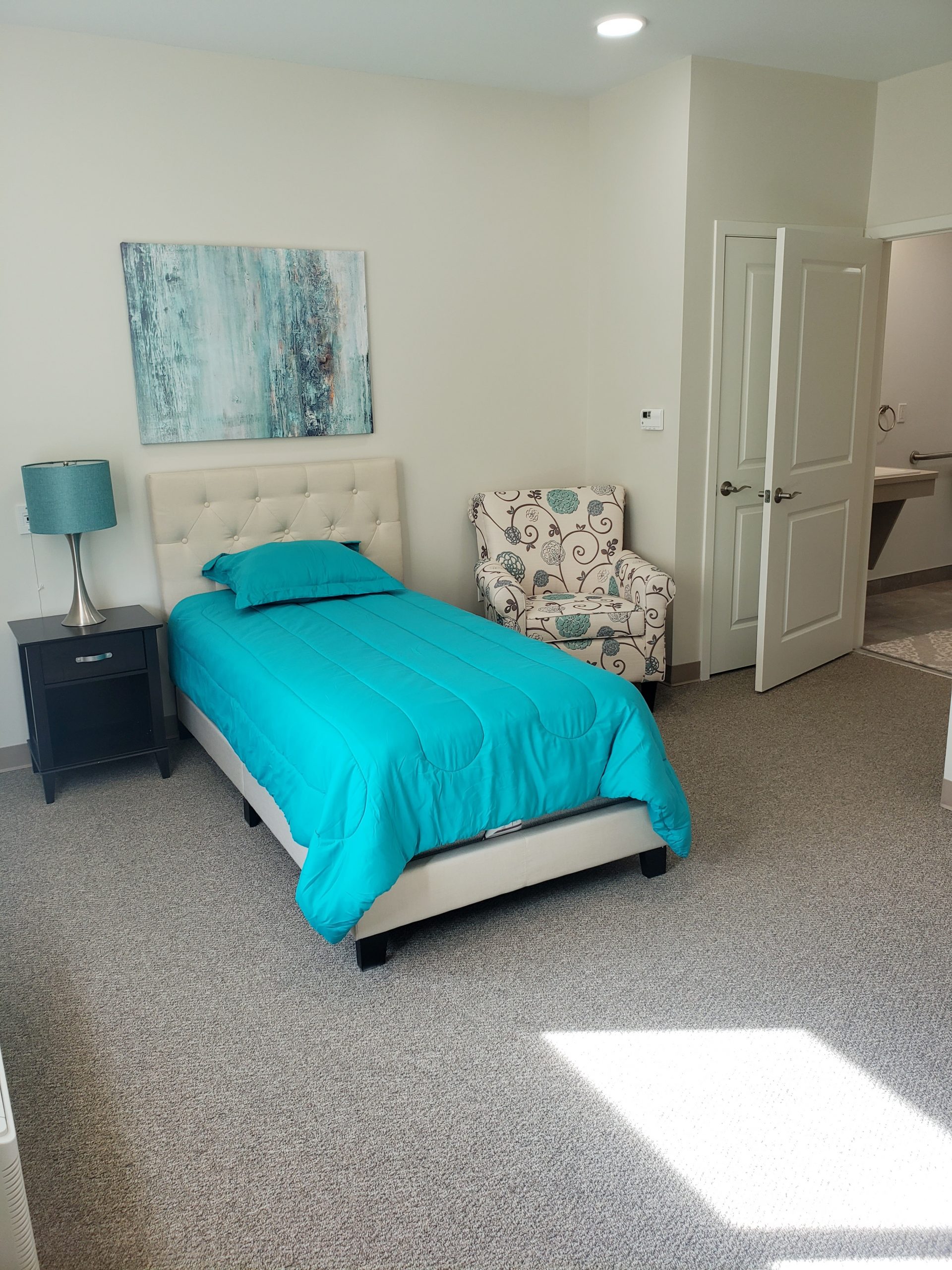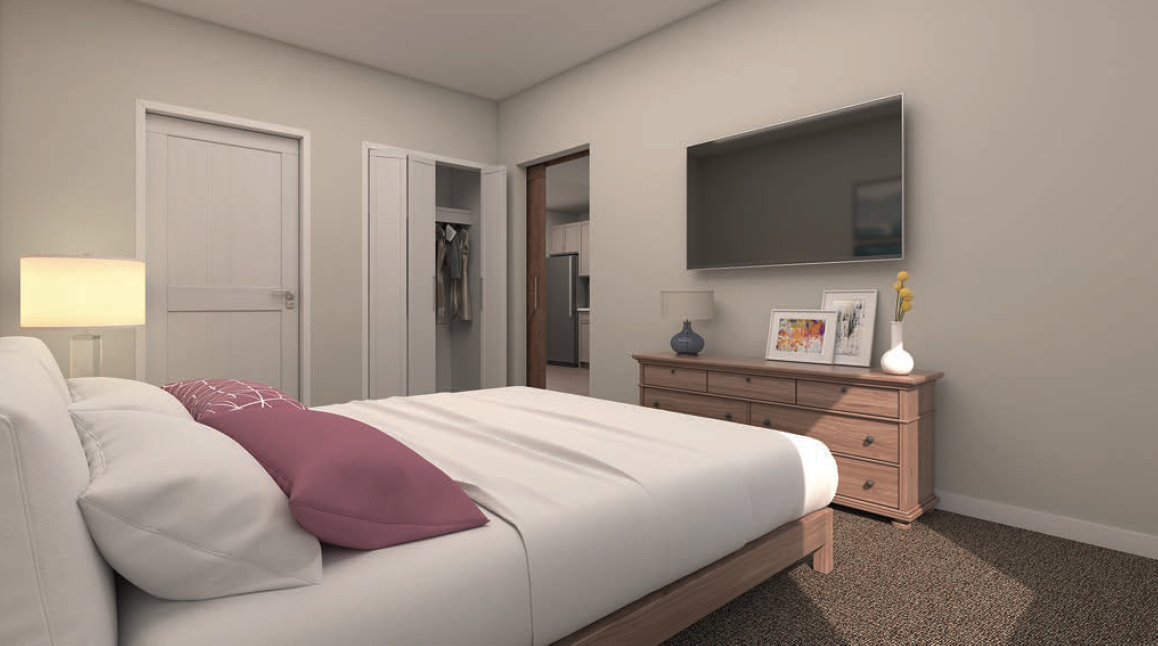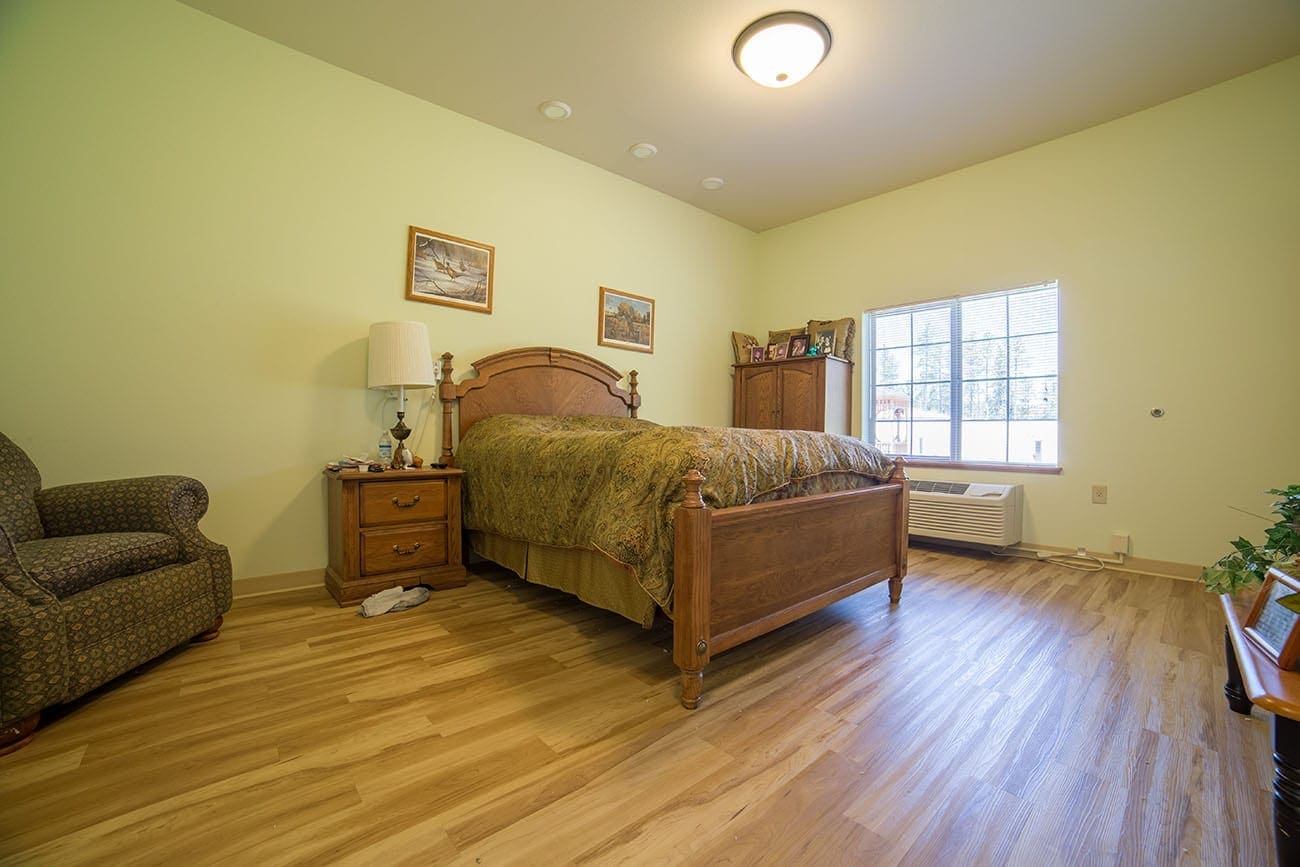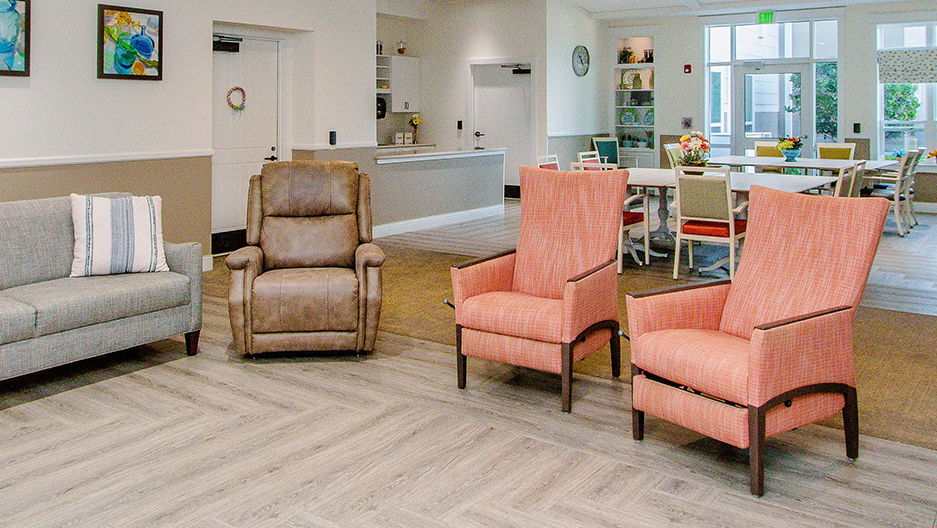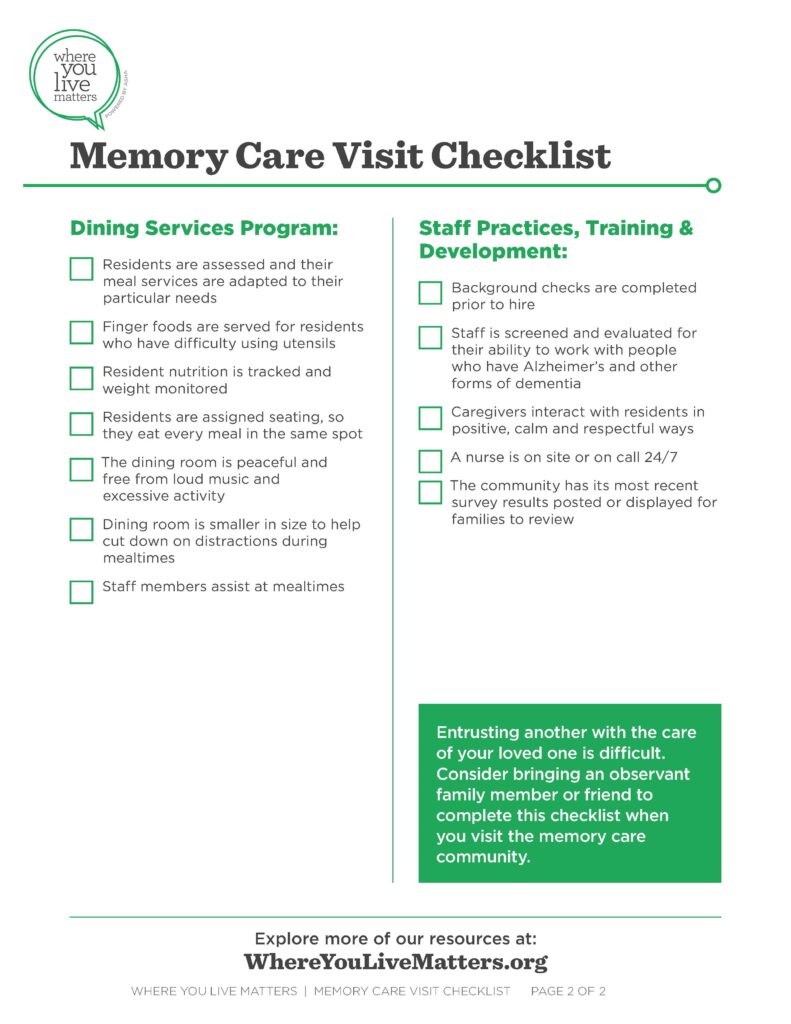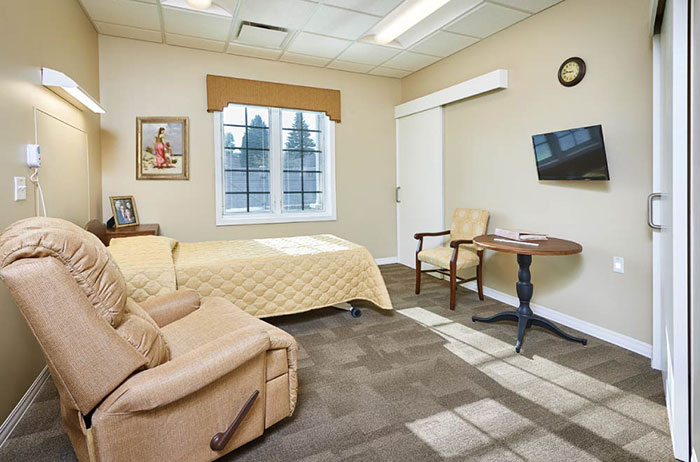The design of a memory care living room is crucial in creating a comfortable and safe environment for residents. It should be inviting, easy to navigate, and promote a sense of familiarity and security. Memory care living rooms should be designed with the needs and limitations of individuals with memory loss in mind. One important aspect of memory care living room design is color schemes. Colors can have a significant impact on mood and behavior, so it is essential to choose calming and soothing colors, such as blues and greens. These colors can help reduce anxiety and agitation in individuals with memory loss. Furniture placement is also a crucial factor in memory care living room design. Furniture should be arranged in a way that promotes easy navigation and minimizes confusion. Clear pathways should be created to allow residents to move freely without obstacles or hazards. Familiar objects can also be incorporated into the design of a memory care living room. This can include items from the resident's past, such as photographs, artwork, or furniture. These familiar objects can help trigger memories and provide a sense of comfort and familiarity.Memory Care Living Room Design
Activities are an essential aspect of memory care living rooms. They not only provide stimulation and socialization for residents but can also help improve cognitive function and overall well-being. Engaging activities should be tailored to the abilities and interests of individuals with memory loss. Music therapy is a popular and effective activity for individuals with memory loss. It can help reduce anxiety and improve mood and communication. Group sing-alongs or individual listening sessions can be incorporated into the daily routine in the memory care living room. Other sensory activities can also be beneficial for residents, such as aromatherapy or pet therapy. These activities can help stimulate the senses and provide a calming effect for individuals with memory loss. Crafts and games can also be incorporated into the memory care living room activities. These activities can help improve fine motor skills and provide a sense of accomplishment and enjoyment for residents. Bingo and puzzles are popular choices that can be adapted to fit the abilities of individuals with memory loss.Memory Care Living Room Activities
The furniture in a memory care living room should not only be visually appealing but also functional and safe. Comfort and ease of use should be top priorities when selecting furniture for a memory care living room. Recliners or lift chairs can provide comfortable and safe seating options for residents. These types of chairs can also assist residents in standing up, reducing the risk of falls. Tables should also be carefully chosen for a memory care living room. Round tables are preferred as they eliminate sharp corners and provide a better flow of conversation. Adaptive utensils and easy-to-grip cups should also be available for residents during mealtimes. Grab bars and handrails should also be incorporated into the memory care living room design for added safety. These can be installed near seating areas and along walls to provide support for residents with mobility issues.Memory Care Living Room Furniture
The layout of a memory care living room should prioritize safety and ease of navigation for residents. Furniture placement and clear pathways should be considered when designing the layout. Some general guidelines for memory care living room layouts include keeping walkways clear and wide enough for residents to move freely. Furniture should also be arranged in a way that does not obstruct doorways or cause confusion for residents. Lighting should also be taken into consideration to ensure a well-lit and safe environment. Different areas can also be designated within the memory care living room for various activities. For example, an art corner can be set up for residents to engage in art therapy, while a reading nook can provide a quiet and cozy space for residents to relax and read.Memory Care Living Room Layout
The safety of residents should be a top priority when designing a memory care living room. Measures should be taken to prevent falls, accidents, and wandering. Non-slip flooring is essential in a memory care living room. This can help prevent slips and falls, which can be especially dangerous for individuals with memory loss. Rugs should also be secured to the floor to prevent tripping hazards. Cameras and alarms can also be installed in memory care living rooms to provide added security. These can detect if a resident is wandering or in danger and alert staff immediately. Clear signage should also be displayed throughout the memory care living room to assist residents in finding their way around. This can include signs for the bathroom, dining room, and common areas.Memory Care Living Room Safety
The decor in a memory care living room should be carefully chosen to create a comfortable and calming environment for residents. Natural elements and personalized touches can help create a sense of home. Plants can add a touch of nature to the memory care living room and provide a sense of tranquility. Framed photos of family members and loved ones can also be displayed to create a personalized and familiar space for residents. Soft lighting can also contribute to a relaxing atmosphere in the memory care living room. Dimmer switches can be installed to allow for adjustable lighting, depending on the time of day or activity taking place. Wall decorations should also be carefully chosen to promote a calming and familiar environment. These can include nature paintings, landscapes, or other calming images.Memory Care Living Room Decor
Memory care living rooms should provide amenities that cater to the needs and well-being of residents. These amenities should promote socialization, comfort, and engagement. Outdoor spaces can be incorporated into the memory care living room design to provide a change of scenery for residents. These can include patios, gardens, or walking paths for residents to enjoy. Other amenities can include beauty and spa services, libraries, or coffee bars. These amenities can provide opportunities for residents to engage in activities they enjoy and promote socialization with others.Memory Care Living Room Amenities
The overall environment of a memory care living room should be warm, welcoming, and supportive of the needs of residents with memory loss. Staff members should be trained in dementia care and understand the unique needs of individuals with memory loss. They should also be compassionate and patient, creating a positive atmosphere for residents. Residents should also be able to personalize their living space within the memory care living room. This can include bringing personal items from home or participating in decorating their room with family members.Memory Care Living Room Environment
Therapy can be beneficial for individuals with memory loss and can be incorporated into the memory care living room environment. Therapy can help improve cognitive function, reduce anxiety, and promote overall well-being. Art therapy and music therapy are popular forms of therapy that can be incorporated into the daily routine in the memory care living room. These activities can help stimulate the senses and provide a sense of accomplishment and enjoyment for residents. Cognitive therapy, such as memory games or puzzles, can also be beneficial for residents. These activities can help improve cognitive function and promote engagement and socialization with others.Memory Care Living Room Therapy
Socialization is crucial for individuals with memory loss and can be promoted in the memory care living room environment. Activities and amenities should be designed to encourage socialization among residents. Group activities such as movie nights, bingo, or art classes can provide opportunities for residents to engage with each other and build relationships. Residents should also be encouraged to participate in community outings or group outings to local events or attractions. These can provide a change of scenery and promote socialization outside of the memory care living room.Memory Care Living Room Socialization
Creating a Comfortable and Safe Memory Care Living Room for Seniors
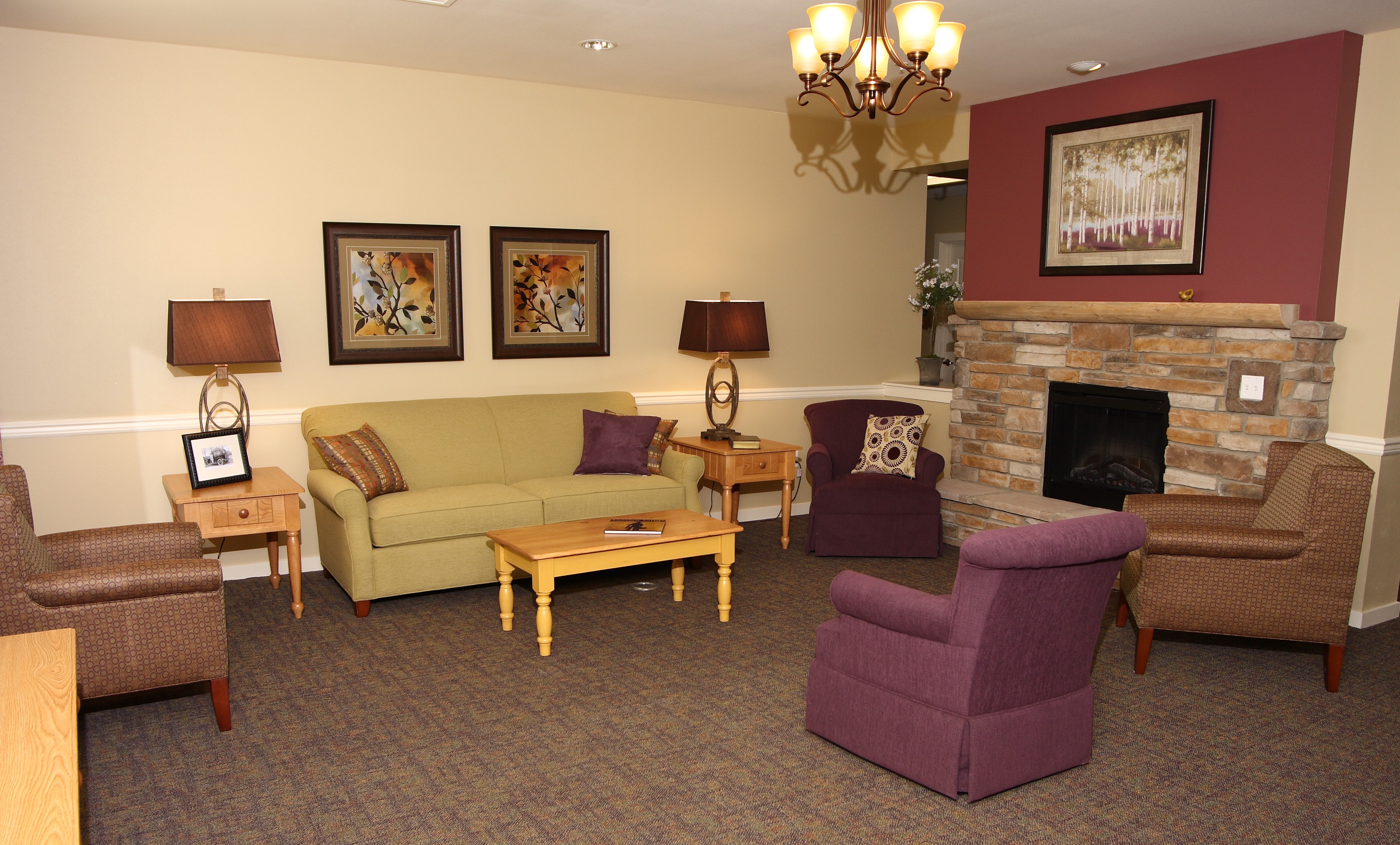
The Importance of a Thoughtfully Designed Memory Care Living Room
 When it comes to designing a memory care living room, there are many factors to consider. This space serves as the heart of a senior's home, where they spend most of their time and create memories with loved ones. For individuals living with memory impairments, the living room design can greatly impact their daily lives and overall well-being. That's why it's essential to create a comfortable and safe environment that promotes independence, encourages socialization, and reduces confusion and anxiety.
When it comes to designing a memory care living room, there are many factors to consider. This space serves as the heart of a senior's home, where they spend most of their time and create memories with loved ones. For individuals living with memory impairments, the living room design can greatly impact their daily lives and overall well-being. That's why it's essential to create a comfortable and safe environment that promotes independence, encourages socialization, and reduces confusion and anxiety.
Designing for Safety and Functionality
 Safety
is the top priority when designing a memory care living room. Seniors with memory impairments are more at risk for falls and accidents, so it's crucial to minimize potential hazards. This can include removing tripping hazards, such as loose rugs or cords, and choosing furniture with rounded edges. Adequate lighting is also essential, as it can help prevent confusion and disorientation. Installing grab bars and non-slip flooring can also provide additional support for seniors with mobility issues.
In addition to safety,
functionality
is key in a memory care living room. The space should be easy to navigate, with clear pathways and minimal clutter. Furniture should be arranged in a way that allows for easy movement and access to commonly used items. It's also helpful to label drawers and cabinets to help seniors locate items easily. Consider using contrasting colors for furniture and walls to help seniors with visual impairments distinguish different elements in the room.
Safety
is the top priority when designing a memory care living room. Seniors with memory impairments are more at risk for falls and accidents, so it's crucial to minimize potential hazards. This can include removing tripping hazards, such as loose rugs or cords, and choosing furniture with rounded edges. Adequate lighting is also essential, as it can help prevent confusion and disorientation. Installing grab bars and non-slip flooring can also provide additional support for seniors with mobility issues.
In addition to safety,
functionality
is key in a memory care living room. The space should be easy to navigate, with clear pathways and minimal clutter. Furniture should be arranged in a way that allows for easy movement and access to commonly used items. It's also helpful to label drawers and cabinets to help seniors locate items easily. Consider using contrasting colors for furniture and walls to help seniors with visual impairments distinguish different elements in the room.
Promoting Comfort and Familiarity
 Aside from safety and functionality,
comfort
and
familiarity
are crucial for seniors living with memory impairments. This can be achieved through the use of familiar and personal items, such as family photos, treasured possessions, and favorite books or movies. These items can help seniors feel more at ease and connected to their memories and loved ones. Soft, comfortable furniture and warm lighting can also create a cozy and inviting atmosphere.
Aside from safety and functionality,
comfort
and
familiarity
are crucial for seniors living with memory impairments. This can be achieved through the use of familiar and personal items, such as family photos, treasured possessions, and favorite books or movies. These items can help seniors feel more at ease and connected to their memories and loved ones. Soft, comfortable furniture and warm lighting can also create a cozy and inviting atmosphere.
Encouraging Socialization and Engagement
 The living room is often a space for socialization and bonding with loved ones. However, for seniors with memory impairments, social interaction may become more challenging as the condition progresses. That's why it's essential to
design a living room that promotes socialization and engagement
. This can include creating seating areas that allow for easy conversation, incorporating activities and games that can be enjoyed with loved ones, and providing opportunities for seniors to participate in household tasks, such as setting the table or watering plants.
The living room is often a space for socialization and bonding with loved ones. However, for seniors with memory impairments, social interaction may become more challenging as the condition progresses. That's why it's essential to
design a living room that promotes socialization and engagement
. This can include creating seating areas that allow for easy conversation, incorporating activities and games that can be enjoyed with loved ones, and providing opportunities for seniors to participate in household tasks, such as setting the table or watering plants.
In Conclusion
 A well-designed memory care living room can greatly improve the quality of life for seniors living with memory impairments. By prioritizing safety, functionality, comfort, and socialization, this space can become a calming and enjoyable environment for seniors to thrive in. With careful planning and consideration, a memory care living room can truly become the heart of a senior's home.
A well-designed memory care living room can greatly improve the quality of life for seniors living with memory impairments. By prioritizing safety, functionality, comfort, and socialization, this space can become a calming and enjoyable environment for seniors to thrive in. With careful planning and consideration, a memory care living room can truly become the heart of a senior's home.
